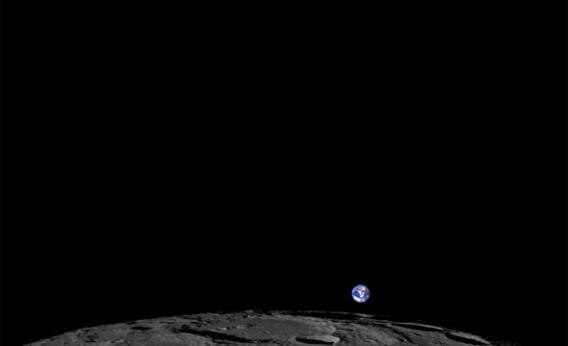Create a free profile to get unlimited access to exclusive videos, sweepstakes, and more!
Earthrise

If you were standing on the surface of the Moon, the Earth would never rise or set. That’s because, due to the slow but inexorable machinations of gravity, the Moon rotates once every time it goes around the Earth. That means it always shows the same face toward us, and, conversely, if you stand on the Moon, the Earth always appears to be in the same spot in the sky.*
If you’re in orbit, though, things change. As you pass over the Moon it appears to slide past you below, and if you face the Earth you’ll see our planet move across the sky. As it happens, we do have spacecraft in orbit around the Moon, and one of them, the Lunar Reconnaissance Orbiter, does sometimes point away from the nadir (straight down, the opposite of zenith) and look to the lunar horizon. It did this on Feb. 1, 2014, and captured the view, creating this narrow but mesmerizing animation:
The animation was created from a series of still images. The dark slots across the frame are due to the way the camera is built. It’s a digital detector, 1024 x 1024 pixels. But to get color information, a series of long, narrow filters are physically lying across the detector, like the slats of a venetian blind across a window. As LRO orbits, a piece of the Moon will move past each part of the detector, getting seen through each filter in turn. You can use this to build up a color picture (which is how the image at the top was done; note it’s in color), or you can simply take all the images one at a time and string them together to make an animation.
Each narrow band you see in the animation is through a different filter. There are five in total, ranging from red at the bottom to blue/violet at the top. Each is shown in grayscale, which means that something black in every filter is dark in that color, and white if it’s bright. Also, a very red object would look bright through the red filter, but dark through the green one.
The Moon is fairly gray all by itself, so it looks about the same through each filter. The Earth has colors, though, so it looks different as it rises. I clipped out the part where the Earth appears, and magnified it. Fix your eyes on the ocean to the left on the Earth. It looks dark in the first filter you see it (which lets through mostly yellow-orange light), and looks bright through the blue/violet filter, as water should.
The image at the top of this post was made combining images taken through different filters at different times. So the Earth passed through the red filter, then the yellow, then the blue. Those pieces were taken out and combined to get a picture that approximates what your eye sees.
It’s a bit of a kludge to make it work, but it’s still pretty cool. But it makes me wonder: When will we once again have people manning the cameras in person, able to capture such a magnificent sight themselves?
* Actually, the Earth will move a little due to an effect called libration, where the Moon actually rocks a bit back and forth (as well as nodding north/south) due to its elliptical, tilted orbit. This effect is small, though … but big enough to have a short operatic piece of music written about it.


























